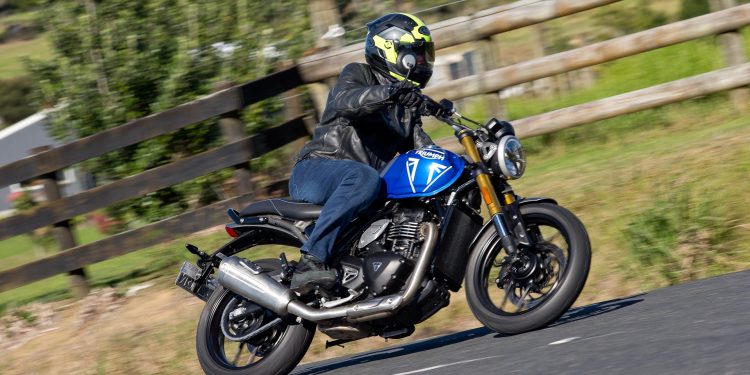2024 Triumph Daytona 660, Scrambler 400, and Speed 400 review
Words: Peter Louisson | Photos: Triumph Motorcycles
Triumph is going places with two new 400 singles, and a pair of Daytona 660s as well. We attend a media day to check out all four.
Triumph couldn’t have launched a new LAMs bike at a more opportune time. With big bike sales on the go slow, the release of the Speed 400 and Scrambler 400X has seen the brand leading the LAMS new bike market in 2024.
After riding both bikes it’s not hard to see why they are proving so popular. Having sticker prices of $7999 and $8999, respectively, helps massively.
It’s the first time a new Triumph has sold below the key $10,000 price point. This is possible because the machines are both built in India by Bajaj.
That’s the same company that manufactures small- to medium-sized KTMs for major western markets.
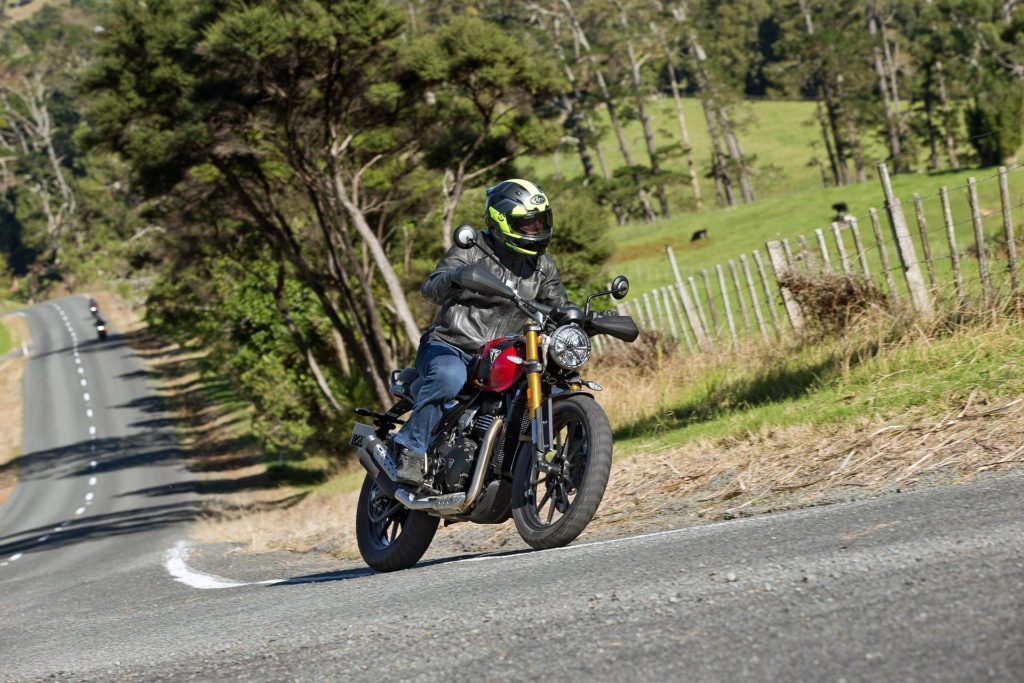
But it isn’t just the price that makes this pair such a drawcard. It’s the fact that the new engine and chassis work a treat, and they come with a good range of accessories that makes personalisation so easy.
Riding off initially on the Scrambler 400 X, right off the bat this feels lightweight, lithe, easy to master. Both corner intuitively, like most singles, especially the Speed 400 with its road-oriented rubber; the Scrambler runs on dual-purpose Metzler Karoos.
The 400X is only 185kg wet (Speed 400 is 175kg) so that helps in terms of manoeuvrability and also for slowing it down. Up front is a ByBre radial-mount four-piston caliper biting into a 320mm fixed disc.
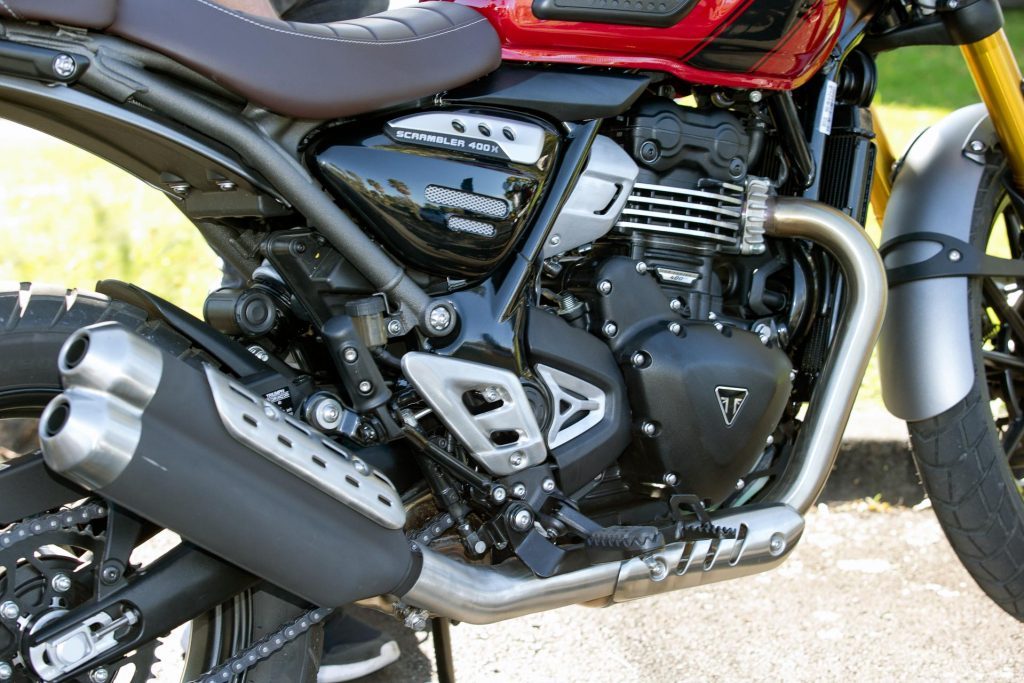
On the Scrambler the pads are organic and are specifically chosen to work well in light off-road conditions. Our bike only had 80km on the odo and while retardation wasn’t that flash we’d expect it to improve with more miles.
A while later we tried out the Speed 400 which features sintered pads and more road oriented rubber (Pirelli Diablo Rosso 3s). Whoa. The stoppers on this were so strong. We reckon they vie for best in the sub-$10k class.
In favour of the Scrambler is the look, with its taller stance, nattier two-piece seat and sweeter upswept exhaust.
It also gets hand guards, a handlebar brace, headlight grille and radiator guard, explaining the higher price. Both of these feature rich colours (red, blue and green with the obligatory black) and a classy finish.
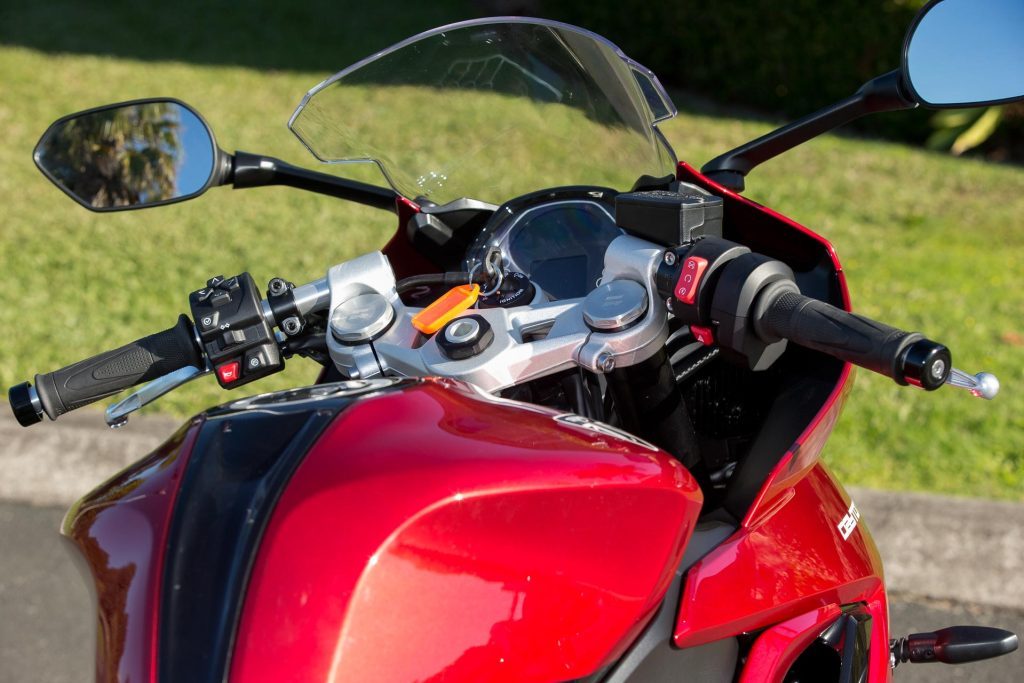
On the go, there’s a surprising lack of vibration from the motor, the mirrors clear at 100km/h and both feel relaxed in top at 5500rpm. Performance is sweet too, the single generating 30kW and 38Nm at 6500rpm.
It feels good in the midband, preferring engine speeds over 3000rpm. Best output is above 5000rpm. Triumph says the 400X is built ‘for freedom’, the Speed 400 ‘for the ride’.
Both seem stellar value to me, taking the fight to the traditional LAMS foes and the new Chinese offerings.
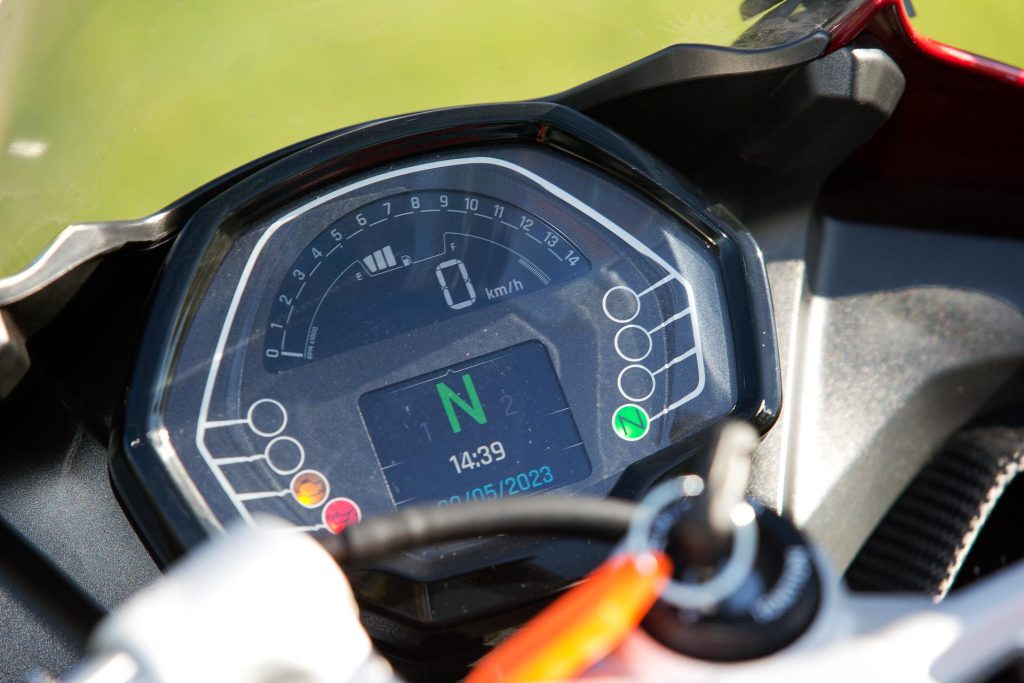
Daytona also in two flavours
What about the bigger bike, the Daytona 660? Again, there’s a pair of them, one LAMS (42kW/62Nm), the other unrestricted (70kW/69Nm).
These are naturally more impressive being dedicated road bikes in another sector up. The look is good with Speed Triple DNA. They stop ever so well with twin discs and radial-mount calipers, and the full-power version goes like stink.
That extra power, however, is only noticeable in the top third of the rev range, and in any gear above second you’re exceeding all sorts of speed limits at the 12,500rpm limiter.
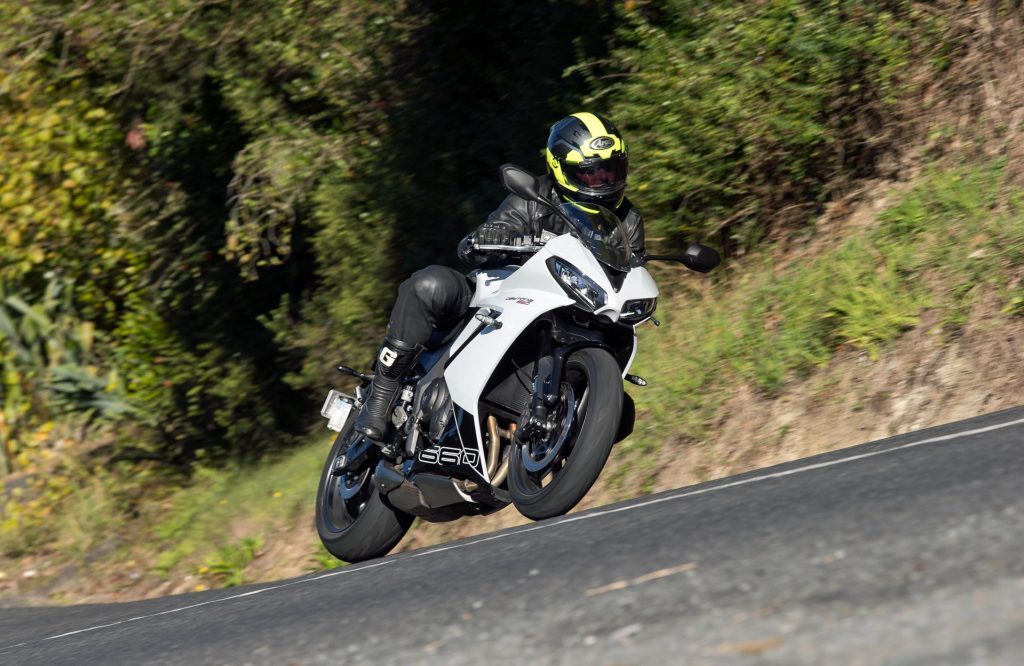
But in the midband the two feel similarly robust. That’s because they both have torque figures in the 60Nm range.
But – and isn’t there always one? – this Daytona won’t suit all body styles. There’s a bit of a lean to the bars and my old neck injury was soon giving me gyp. However, this bike is a world away from the rack-like Daytona 675.
The latest Daytona is much more like a road than a track bike; the clip-on bars aren’t too severe and the all-Showa suspension set-up has compliance that was totally alien to the Daytonas of yesteryear.
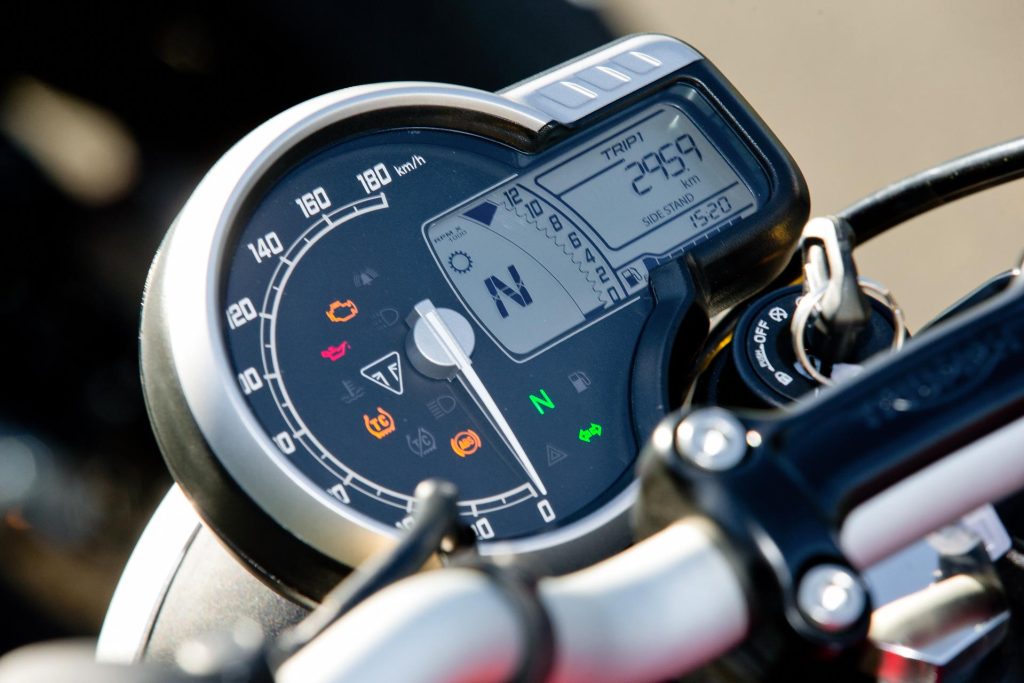
It has the expected fare including three ride modes (Sport, Road, Rain), Michelin Power 6 rubber, ABS and switchable TC, colour TFT screen and LED lighting.
Figure also on 16,000km service intervals and two-year factory warranty. Rivals to the $15,990 LAMs model and the $16,690 unrestricted Daytona include the Honda CBR 650, Yamaha R7 and Suzuki GSX-8R.
So which of these then?
On the day the wee bikes shone for me. They’re just so competent across the board. We like the look, the natural riding position, the fluid, lightweight gearbox action, the ease of riding and the finish. You’d not credit how good that is.
About the only real disappointment regarding both 400s is the instrument set-up. It looks fine but the rev counter is a tiny little thing – I had trouble differentiating 5000 from 6000rpm on the go, and the speedo is analogue.
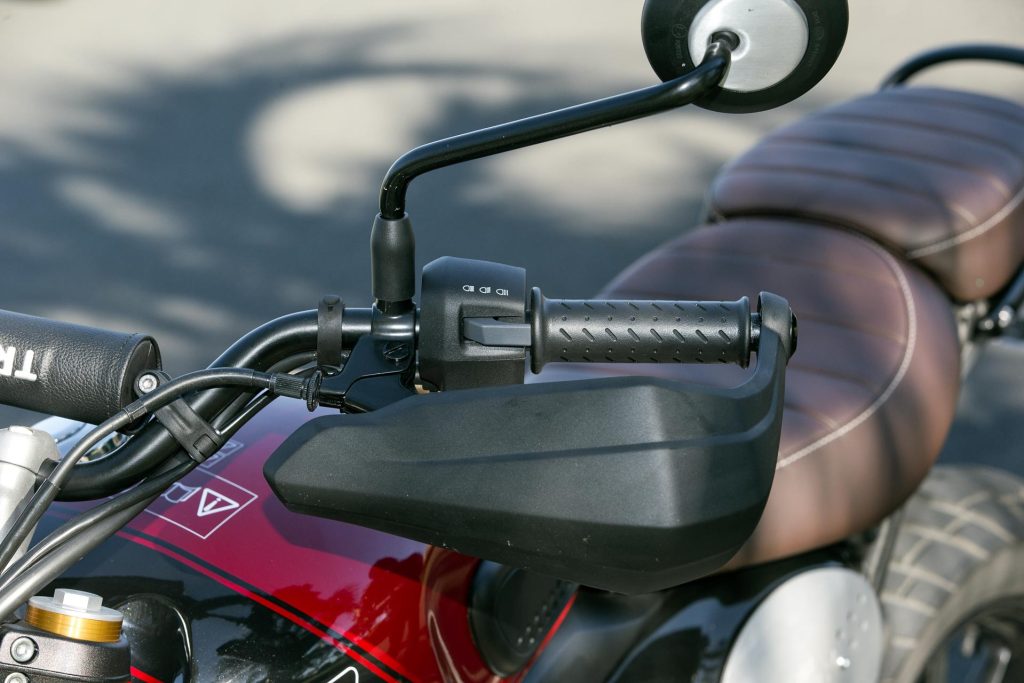
Both aspects mean you’re distracted way too long checking out vitals, and when you look up again, what ho? Moreover, I cannot think of a bike that stops as well as the Speed 400 for under $10k.
The seat comfort on both is great too. These will give current faves in the sub $10k LAMS sector a proper run for their money.
Both bikes have been racing out the doors since they landed here a month or so ago, over 160 of the 400s finding new homes already. The first shipment sold out before it even landed.
And the Daytona? Not quite so much, which is really an indictment of the sector itself.
Sports bikes are like the sedans of the dual-tracker world. People are looking elsewhere, especially those who are over the windswept riding position. That’s why ADVs are so popular; they make comfortable mounts for a range of riding situations.
One of my colleagues reckons he needs to get his partner to try out the Speed 400, says it would be ideal for her, especially with an accessory fairing for unfair weather.
And he’s dead right. I might even try to get my ex-rider partner to give it a lash, it is so unthreatening. Now that would be something.
This story first appeared in the June 2024 issue of NZ Autocar magazine.


